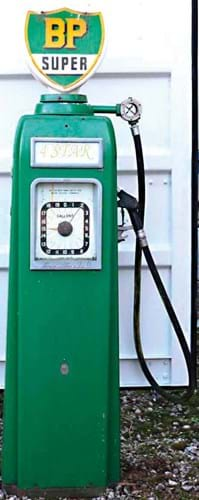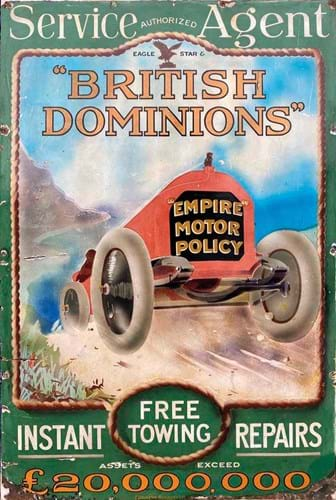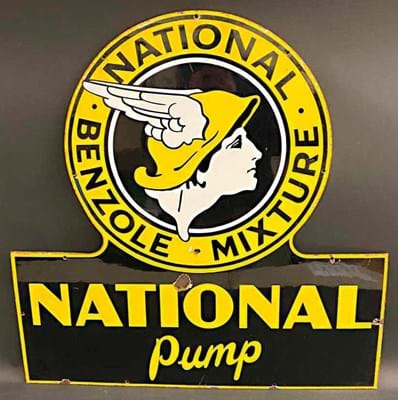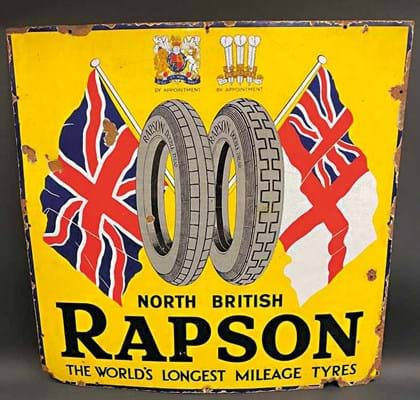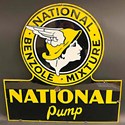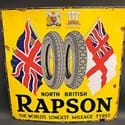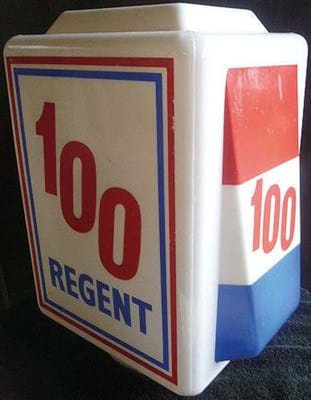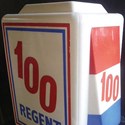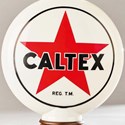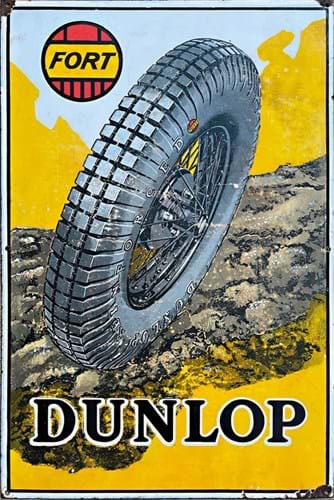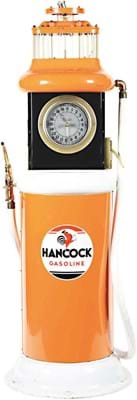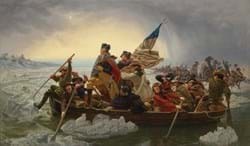As motoring became more and more popular, the need for an efficient way to transfer petrol to cars without using a can and funnel became obvious. And away from urban centres and the road itself.
Many early independent garages would have been converted roadside premises – a blacksmith’s, for example.
Primitive ‘skeleton’ pumps appeared but the designs were increasingly sophisticated.
Innovations such as an underground tank with a hand-operated pump helped with both safety and speed.
The first roadside petrol pumps were established in St Louis, US, in 1905 (it is thought the first pump design, for kerosene, dates to 1885, by a gloriously named American, Sylvanus Freelove Bowser. It was adapted for cars).

A rare Wayne Model 276 hand-cranked petrol pump, a model produced between 1915-27. This pump sold within estimate for £2000 at Richard Edmonds. The Wayne Oil Tank & Pump Company of Indiana designed its first gasoline pump in 1907. Eleven years later it introduced the first ‘visible’ pump so motorists could see and control the amount of gas going into their tanks.
The first British petrol station was opened in November 1919 at Aldermaston, Berkshire, by the Automobile Association (AA) using just a single, hand-operated pump.
Britain’s first self-service petrol pump became operational in November 1961 at Southwark Bridge (a stone’s throw away from ATG’s London office today).
Early versions
One of the earliest companies meeting the new demand was Gilbert & Barker in the US. In 1910 it added hand-operated petrol pumps to its product line with the first measuring pump appearing soon after. Electric and computing versions followed in the 1930s.
Offered without estimate, a Gilbert & Barker hand petrol pump, about 8ft (2.44m) high, sold for £800 at Worcestershire saleroom Littleton (19% buyer’s premium) as part of a sizeable group of automobilia offered on March 26.
One of the engineering companies to take advantage was Avery Hardoll. The firm dates back to 1932 with the formation of a private Anglo- French company in Kilburn, north London. W and T Avery owned a substantial interest. Avery Hardoll pumps appeared in 1937.
An Avery Hardoll pump featured at Kent saleroom C&T (22% buyer’s premium) on February 8-9.
Marked for Regent, with a reproduction Shellmex glass globe, the Avery Hardoll no 87232 model measured 5ft 9in (1.76m) to the bottom of the light. It took £1200 (estimate £600-800).
Sold for £1750 (guide £600-800) at C&T was a vintage petrol pump for BP, 4 Star, with a reproduction BP Super glass globe, no 104307, standing 2ft 6in (1.75m) to the bottom of the light.
Beckoned in
The motorist would also have seen a wide variety of alluring pump globes and enamel signs beckoning them to use a particular company’s product.
Post-war trading agreements meant filling stations would no longer offer a variety of brands with each pump being a different colour with a different illuminated globe.
But the earlier striking signs and globes themselves often appear at auction separately and can make high prices depending on original features and condition.
A specialist saleroom in this collecting field – where automobilia morphs into petroliana – is Richard Edmonds (20% buyer’s premium inc VAT) of Chippenham, Wiltshire.
The March 5 auction of Petroliana – enamel signs, petrol pump globes, oil cans and early advertising featured a Shellmex glass petrol pump globe by Hailware in ‘superb condition, fully stamped underneath and dated November 1956’. It took £1700 against a guide of £650-800.
The saleroom has achieved five-figure prices for globes, including a Deco-inspired Dominion Guaranteed globe dated to c.1937 in excellent condition that took £23,000 in October 2020 (ATG No 2468). That was thought to be a record for a British petrol globe and akin to the sort of mighty sums paid for rarities made in the US.
Top-selling signs in this latest auction included a National Benzole Mixture National Pump enamel sign, described as having ‘superb gloss’, a sign ‘rarely found in this condition’.
Estimated at £1800-2200, the 2ft 3in x 2ft 4in (69 x 71cm) example sold for £4300.
Other enamel signs on offer included a Rapson North British tyres sign, with royal crest and fleur de lis motifs, and central pair of tyres with flags, 3ft (91cm) square, which took £3700 (estimate £3000-3500).
A classic, sought-after British Dominions ‘Empire’ Motor Policy pictorial enamel sign with an image of a racing car sold on low estimate at £4800.
Cambridge selection
A rare Regent 100 petrol pump globe, with Webb’s Crystal Glass stamp to the base, was one of the stand-out items at Cheffins (10% buyer’s premium) among more than 400 lots of automobilia in the April 23 sale in Cambridge held by the firm’s machinery and vintage auctions department. It took £4800. Another globe that impressed was a Caltex example sold for £1900.
Among the enamel signs, a rare Dunlop Fort design from the 1930s, in ‘remarkable condition’, took £4200.
A couple of air towers sold for four figures. A 1930s Dunlop air tower in unrestored condition – a rare cast pedestal model with rotating head and hinged air delivery hose, 6ft (1.83m) tall body and 12ft (3.66m) tall to the top of the hinged section – was described as a ‘most uncommon example’. It made £4200.
Sold for £2800, a 1950s PCL air tower in Shell livery, manufactured in England by Pneumatic Components Ltd, was a ‘a rare cabinet-mounted air meter that has been suitably restored and stands 6ft (1.83m) tall’.
Talking gas not petrol
As is so often the case in the collectables world, such as comics, the prices paid in US auctions often dwarf those in UK salerooms.
North American automobilia and petroliana dominated the second and the third days of the Morphy (20% buyer’s premium) 1500-lot auction in Denver, Pennsylvania, on March 29-30. Restored petrol pumps with reproduction globes performed well, taking five-figure sums (see selection pictured here), as did original petrol pump globes.

The top-selling petrol pump globe at Morphy on March 29-30 was this “outstanding, original” c.1930s Western Motor Gasoline globe lens with the image of cowboys riding horses across a south-western landscape. It measures 13½in (34.5cm) in diameter and, importantly, it has its original red ripple Gill body. Morphy’s automobilia and petroliana department head John Mihovetz said: “Any red ripple body would be in great demand because it can display lenses so well. I have only seen a globe of this type with the red ripple body once or twice before at auction.” It sold for $18,475 (£14,040), just dipping below estimate.
Morphy said: “These globes are highly coveted for their artistry and the fact that they represent petroleum companies of another era or particular regions of the country.”


